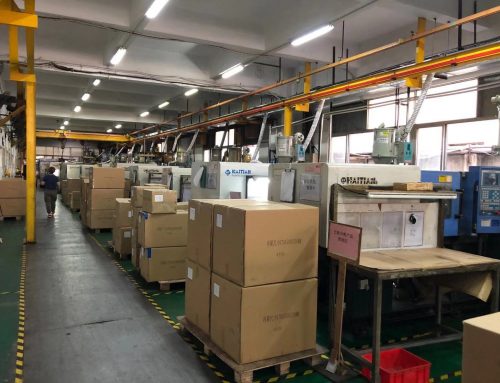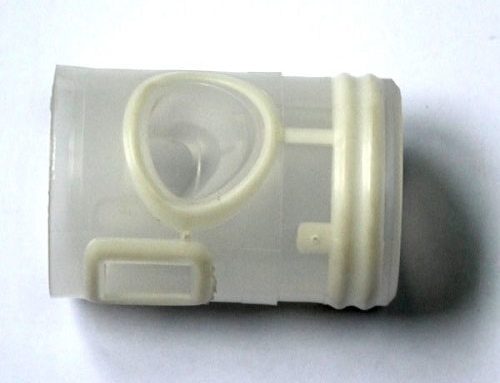With the rapid development of electronics, telecommunications, medical, automotive and other industries, requirements for high precision plastic products are increasing day by day. Precision injection molding requires not only high dimensional accuracy, low warpage, high precision, but also excellent optical properties. To improve level of injection molding technology, produce high-precision plastic products, and create high value-added products, design of molds becomes the most important link.
In the design of injection molding, in addition to general mold design considerations, special consideration should be given as following:
Appropriate mold size and tolerances
– Relation between product size accuracy and mold dimensional accuracy
Draw a product map, considering mold design, mold making and molding process. First, mold surface size can be obtained from product drawing size. Mold is made according to size of mold drawing to obtain actual size of mold. The molded article can be obtained by using mold including actual size of the product.
– Proper shrinkage
As described above, even in same resin using same pigment, shrinkage ratio varies depending on molding conditions. In precision molding, degree of shrinkage change is small, and it is expected that shrinkage rate and actual shrinkage are as small as possible. The main solution is using actual shrinkage rate of similar products in the past to estimate shrinkage rate, and also using experimental mold to find actual shrinkage rate, and then modify and design production mold.
However, it is almost impossible to fully predict shrinkage rate, and it is inevitable to correct the mold after trial molding. As a result of correction, recess will increase in size and projection will be downsized. Therefore, shrinkage ratio is set to a small value for size of concave portion and a large value for size of convex portion. When outer diameter of gear becomes larger, it cannot be engaged. When gear is smaller, only backlash becomes larger, so shrinkage ratio should be set to a small value.
Prevent occurrence of molding shrinkage fluctuations
Precision injection molding must be based on assumption that mold can be made to required size. However, even if mold size is constant, actual size of product varies depending on actual shrinkage.
Therefore, in precision injection molding, control of shrinkage is very important. The suitability of mold design governs shrinkage rate. It also varies with resin batch. If pigment is changed, shrinkage rate will also vary. Fluctuate of setting on molding conditions, reproducibility, and operation for each molding cycle cause actual shrinkage rate fluctuates. Thus control of shrinkage is difficult.
Main factors affecting shrinkage
Size of mold can be determined by size of product plus shrinkage rate, so main factor of shrinkage rate needs to be considered in design of mold. These effects vary depending on changes in items such as resin and molding conditions.
The main factors affecting the molding shrinkage rate are:
1, resin pressure
Resin pressure has a great influence on shrinkage rate, and if resin pressure is large, shrinkage ratio becomes small, and product size is large. Even in the same cavity, resin pressure varies depending on shape of product. In the case of a multi-cavity mold, resin pressure in each cavity is likely to be different, and as a result, shrinkage rates of respective cavities are also different.
2, mold temperature
Regardless of amorphous resin or crystalline resin, if mold temperature is high, shrinkage ratio becomes large. Mold temperature of precision molding should be maintained at a specific temperature.
3, gate cross-sectional area
In general, when gate cross-sectional area is changed, shrinkage ratio also changes. Shrinkage ratio becomes smaller as gate size becomes larger, which is related to fluidity of resin.
4, product wall thickness
Thickness of product wall also affects shrinkage. For amorphous resin, resin tends to have a different influence on shrinkage ratio of wall thickness. Wall thickness is large, and shrinkage ratio is also large. On the contrary, shrinkage ratio is small. For crystalline resins, it is necessary to avoid a particularly large change in wall thickness. In the case of a multi-cavity mold, if wall thickness of the cavity is different, the shrinkage rate will also vary.
5, enhanced material content
When using Boli fiber reinforced resin, the more glass fiber is added, the smaller shrinkage rate is. Shrinkage rate in the flow direction is smaller than transverse shrinkage rate. In order to prevent twisting and warping, shape, position and number of gate must be considered.
6, directionality
The orientation of crystalline resin is particularly large and varies depending on the wall thickness and molding conditions.
In addition, there is also shrinkage after molding. The main factors affecting shrinkage after forming are:
. Internal stress relaxation
. crystallization
. temperature
. humidity
The measures that can be taken are:
. Runner, gate balance
Shrinkage rate changes due to resin pressure. In the case of a single-cavity multi-point gate and a multi-cavity mold, it is necessary to perform gate balancing in order to perform same filling. Flow of resin is related to flow resistance in flow path, so it is best to balance flow path before gate is balanced.
. Cavity(injection molding assembly) arrangement
In order to make setting of molding conditions easy, it is necessary to pay attention to cavity arrangement. Since molten resin puts heat into mold, mold temperature distribution is concentric with the gate as a center in the case of the general cavity arrangement. Therefore, when selecting cavity arrangement of multi-cavity mold, it is necessary to take flow path balance easily, and take concentric arrangement centered on the gate.
Prevent the formation of deformation
Reason for deformation of molding is that there is internal stress under uneven shrinkage, so it is necessary to prevent uneven shrinkage. In the case of a circular product having a hole in the center of gear, a gate must be provided at the center. However, when flow direction of resin differs greatly from vertical direction, there is a disadvantage that an ellipse is generated, and a circle with higher precision is required and you need to set it to 3 or 6 o’clock.
However, it is necessary to pay full attention to balance of each gate. When side gate is used, 3-point gate will increase inner diameter of cylindrical product, and inner multi-point uniform gate is less used in the case where outer surface and end surface do not allow gate mark, and good results can be obtained.
Prevent demoulding from deformation
Precision products are generally small, product wall thickness is thin, and even some have many thin ribs. Chess design must consider that product is not deformed, and can be properly removed. For a resin having a small shrinkage rate, when molding pressure is high, it is necessary to pay attention to that product is liable to remain in the cavity. When gear is molded with a resin having a small shrinkage ratio, gear portion cavity is preferably designed on ejector plate of ejection side.
When using top pin, pay attention to number of top pins and top pressure position without deformation. A perforated gear requires a core pin. In order to facilitate parallel ejection when ejecting, it is necessary to provide an ejecting side template.
For horn-like articles, punching stencils can be used for ejection to prevent deformation. Generally, precision products have a small draft angle. In order to reduce mold release force, mirror processing is required, and grinding direction must be draft direction. It is necessary to set a block core that is easy to grind in the direction of draft.
Prevent error of mold accuracy
To ensure positioning of sliders in each cycle, it is necessary to prevent fluctuations in the accuracy of mold. In order to maintain accuracy of sliding member, sliding member should be honed and ground. Matching of sliding portion on the side core should have a positioning and retracting portion.





